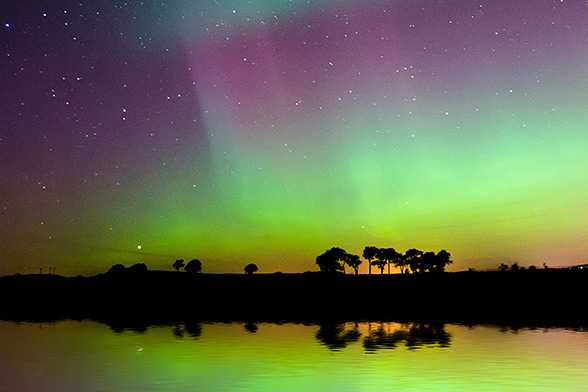Finding the Aurora Borealis in the UK

The auroras borealis, often called the Northern Lights, are a unique and inspiring sight that have long caught people’s imaginations, fuelling myths and fairy tales with the spectacular displays of colour that fill the night sky. Despite their surreal appearance, the Northern Lights are a purely natural phenomenon, and can often be seen throughout northern Europe and parts of the UK. While the sight might only last for a few moments, they certainly leave an incredible impression that cannot be forgotten.
What are the Aurora Borealis?
The auroras borealis are caused by geomagnetic activity in the atmosphere of the Earth, as magnetic particles collide with solar wind from the sun, caused by explosions on the surface of the sun. The result is a shimmering, bright streak of light across the dark night sky, often vivid green or red. Occasionally with increased sun activity, the lights can become more active, causing rays of colours to move around the night sky – giving the aurora their other nickname, the “Merry Dancers”. As different elements in the atmosphere of the earth are affected, a range of colours, from blues, yellows and pinks, as well as green and red, can all be seen.
Most auroras borealis are visible closest to the parts of the Earth’s atmosphere which are most likely to be affected by solar winds. This is often the northern-most parts of the Northern Hemisphere, including countries like Scandinavia, Greenland, Iceland, Canada and Russia. But with increased activity, the borealis can also be seen across large parts of the UK.
Where To Find Them In The UK?
The auroras borealis have been sighted across many parts of the UK, most notably northern parts of Scotland, but also Northern Ireland and England. The key to spotting the lights is both luck and the right choice of location – avoiding light pollution, cloudy nights and heading northwards will all increase your chances of seeing them. Open rural areas on higher altitudes, including small villages and towns where there is minimum or little light pollution, are common places to catch the sight of the borealis. The lights are also most likely to be visible during the later portion of the night, often between 10pm – 2am, so it’s worth staying up late to grab the opportunity.
To catch the aurora borealis in the UK, your best bet is in Scotland. The most northerly parts of Scotland, including the Shetland Isles and Durness, both offer quiet, remote locations with a rich and diverse landscape. Visitors staying in these areas hoping to catch sight of the lights at night will find plenty to enjoy and discover by day too, including stunning flora and wildlife. Smaller urban areas, including Stornoway and the Isle of Skye also offer comfortable and enjoyable places to visit, without being overly built up to obscure the borealis when they appear.
Aurora Borealis is also visible in countries such as Iceland, Norway, Canada and some others located in the high northern latitude regions.
Aurora Borealis in Iceland
Aurora Borealis in Norway
Aurora Borealis in Canada